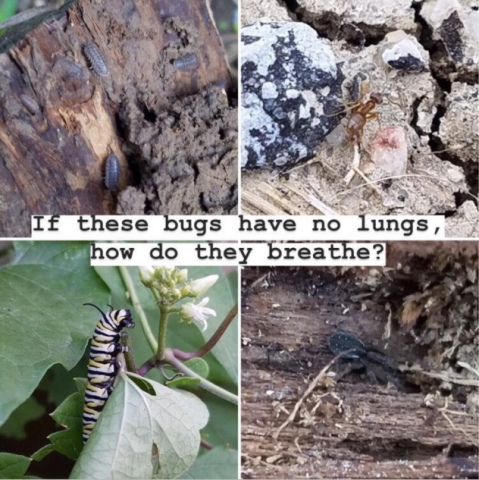
Bugs and Breathing Methods
There are a couple of different ways bugs can breathe. Some require moisture, while others do not. Isopods have a very different breathing mechanism. The more students learn about these traits, the better they will understand why Isopods live in moist environments while insects do not need to.
Location
Council Bluffs, IA
Driving Question
- How do bugs breathe?
Probing Questions
- What are some different bugs that live in Iowa?
- Why do some bugs live under rocks and logs, while others do not?
- How do different species breathe compared to humans?
Classroom Suggestions
Students could:
- Go outside and collect bugs, recording where they found them (Remember to return the bugs when you’re finished). Next, have the students group the types of bugs they found. You may want to add bugs you know live in Iowa but couldn’t find.
- Investigate and research the structure of the different bugs, including the tough exterior, the number of legs, how they breathe.
- Have students research other species breathing mechanisms and how those support that particular organism.
Resources
- Insects of Iowa: This site will help you identify different insects (and more). Does not appear to have any isopod identification.
- Missouri Department of Conservation | Pillbugs And Sowbugs (Land Isopods): There are thousands of species of isopods, This site will help you split those into two seperate groups. (pill bugs and sow bugs).
- MZE Science | Three Different Ways To Breathe: This animated image shows how humans, birds, and grasshoppers breathe.
Iowa Core Alignment
4-LS1-1:Construct an argument that plants and animals have internal and external structures that function to support survival, growth, behavior, and reproduction
Credit Info
Submitted by Nathan Van Zante.
Thumbnail Image by Ryan Hodnett.
Funding for Iowa Science Phenomena provided by:




